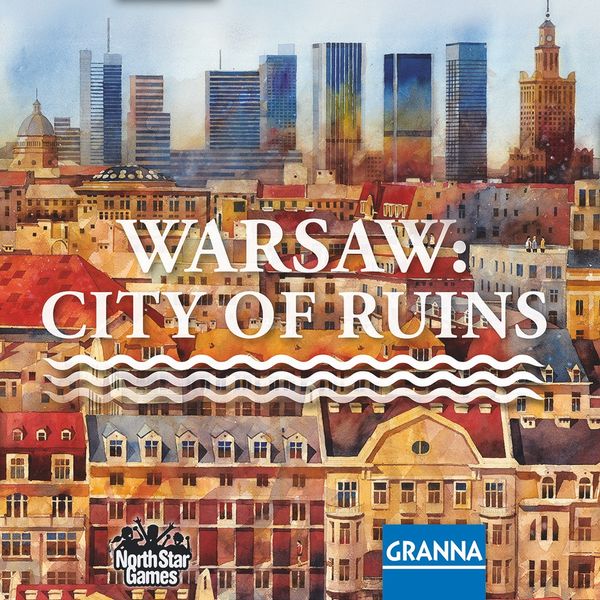Warsaw: City of Ruins (2016) Board Game
Warsaw: City of Ruins is a city-building board game that takes place in Warsaw, Poland, after World War II. Players take on the role of urban planners trying to rebuild the city and restore its former glory. The game was designed by Filip Miłuński and published by Granna in 2016.
Game Components of Warsaw: City of Ruins
How To Setup Warsaw: City of Ruins
Players begin with a Starter tile that is half Park and half Residential. Each player starts with an empty grid where they will build their district. The game is divided into six epochs, each starting with a draft of four tiles from which players choose one, passing the rest to their left or right.
Gameplay Mechanics and Game Objective
Player Experience
Playing **Warsaw: City of Ruins** is a dynamic and emotionally engaging experience. The game beautifully captures the ebb and flow of a city over centuries, with artwork that evolves from simple village scenes to bustling metropolis visuals. The inclusion of historical events like World Wars adds a layer of realism and challenge, forcing players to adapt and rebuild. This mechanical and thematic depth creates palpable tension and satisfaction as players navigate the ups and downs of city development.
Pros
Cons
Personal Thoughts on Warsaw: City of Ruins
**Warsaw: City of Ruins** is ideal for players who appreciate city-builders, historical themes, and games with deep mechanical and thematic integration. It is particularly suited for those who enjoy strategic planning, adapting to setbacks, and the satisfaction of rebuilding and growth. This game is not for casual players seeking a light, quick experience but is perfect for those willing to invest time and thought into creating a thriving city despite historical challenges.
We are supported by our audience. When you purchase through links on our site, we may earn an affiliate commission, at no extra cost for you. Learn more.

